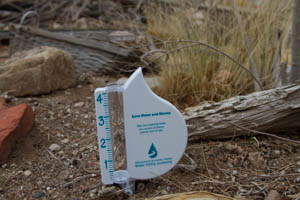Reed Benson, water law professor at the University of New Mexico, has an op-ed in this morning’s Albuquerque Journal arguing for the re-authorization of the US Bureau of Reclamation’s Drought Relief Act powers, which expired last year (adwalled):
Major droughts, including more intense ones than this, have always been a fact of life in the West. We can’t expect government to stop drought, but we do expect it to assist in planning for it and to provide a measure of relief when it strikes.
The last Congress, however, actually made the current drought a little worse for the West: It failed to reauthorize the Drought Relief Act, allowing key parts of the law to expire in 2012.
This is one of those fascinating but obscure cubbyholes of federal water law that’s worth more attention than it gets.
The question is what authority the federal water agencies have, and what purposes they’re legally authorized to pursue, in managing water. (For example, the Army Corps of Engineers regularly argues that it’s only got the statutory authority to protect against flooding. That’s the job Congress gave it. This played a role in debates this year over barge traffic on the Mississippi, and is an argument that’s currently in play in debates over who has what responsibility in managing the Rio Grande for protection of endangered species.)
The Drought Relief Act provided the US Bureau of Reclamation the authority to expand its scope of action during drought. Here’s Benson writing in the Ecology Law Quarterly:
Title I of the Drought Relief Act, however, authorizes the Secretary to take a variety of actions including drilling wells, constructing temporary facilities, acquiring water from willing sellers, making loans for various purposes, and providing temporary water supplies for a range of uses…. Thus, Title I can provide a measure of authority to act, which should allow USBR to be more effective in reducing the impacts of water shortages … including those related to climate change.
In particular, Benson argues that the Drought Relief Act might provide the Bureau with some flexibility in providing environmental flows during drought times (like now, for example). More generally, he argues the legislation might offer more general operational authority to the Bureau to help manage for what he calls the “double whammy” of climate change and drought.




